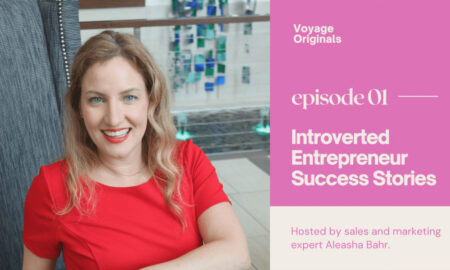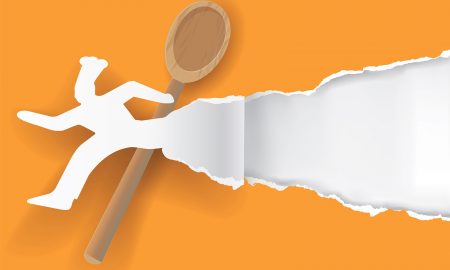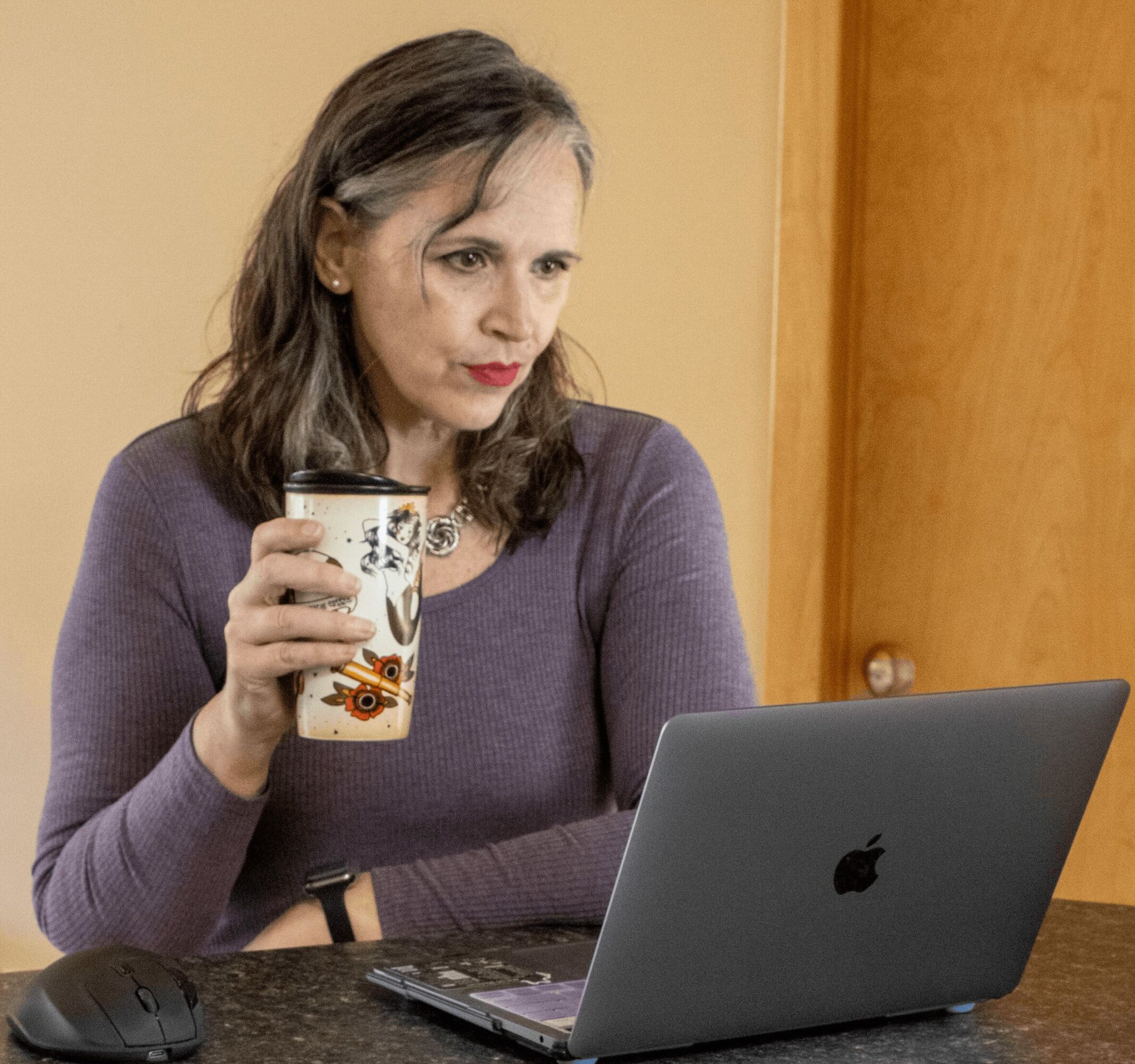

Today we’d like to introduce you to Wendee Mullikin
Wendee, we appreciate you taking the time to share your story with us today. Where does your story begin?
In the evolving landscape of rural Michigan, where farmland gradually gives way to suburban development, a story of transformation unfolds. It’s a tale that began with music and education, winding through personal challenges and triumphs, and ultimately leading to a career helping authors find their voices – much like a conductor guiding musicians through a complex score.
As the first in my family to earn advanced degrees, my journey started with a full-ride music scholarship, earning a BA in music with a creative writing minor. Between a full load of coursework, some beginning at 8 AM, I worked nights bartending at a local nightclub – an early sign of the determination that would mark my career path. Following graduation, I stepped into teaching at a parochial school, beginning a career in education that would span decades.
My talent for adaptation emerged in the classroom, where I arranged popular songs like Smashmouth’s “All Star” and The Cranberries’ “Zombie” for my band students as the small group size didn’t lend itself to pre-orchestrated versions. This ability to reimagine existing work while preserving its essence would later become crucial in my editing career.
Life brought its own arrangements to orchestrate: marriage, three children, and eventually divorce. Through these personal transitions, including becoming a single parent and later blending families “Brady Bunch-style” with my second husband’s three children, I maintained my focus on growth and education. I pursued additional teaching certifications and a master’s degree in special education, all while instilling values of empathy and justice in my children – two of whom would go on to pursue helping professions as a psychiatrist and a therapist.
The year 2008 marked an unexpected turning point. Reading “Twilight” opened the door to romance novels, revealing possibilities I hadn’t seen before – both in literature and life. The genre’s promise of “happily ever after” resonated deeply during a time when my own marriage was struggling. This personal revelation eventually led to professional transformation.
A simple 140-character response to an author’s social-media post in 2012 launched my editing career. What began as beta reading quickly evolved into detailed editing work, leading to positions with romance, LGBTQ+, and young adult publishers. My approach to editing, like teaching, focused on customizing the experience for each author’s needs – highlighting “telling” passages for one writer, offering different guidance for another – always preserving the author’s unique voice while nurturing their growth.
When rheumatoid arthritis forced me to leave teaching in 2019, it wasn’t an ending but a transition. The condition, which had been in remission through my childbearing years, had returned with force in 2010. Rather than see this as a limitation, I embraced it as an opportunity to focus fully on editorial work, bringing together all the threads of my experience – the musician’s ear for rhythm, the teacher’s gift for nurturing growth, and the parent’s understanding of the importance of both boundaries and encouragement.
Today, I work as a freelance editor and romance author, helping authors craft stories of love and transformation – stories I know intimately from my own journey. Like the carefully arranged music I once created for my students, each manuscript I touch becomes a unique composition, preserving the author’s original voice while helping it reach its fullest potential.
We all face challenges, but looking back would you describe it as a relatively smooth road?
At fourteen, in a small Michigan workshop, I began honing the fundamental traits that would shape my working career: patience, precision, and respect for process. Sanding and priming wooden pieces for tole painting might seem far removed from editing manuscripts or writing novels, but these early lessons in craftsmanship laid the foundation for a lifetime of detailed work.
The journey wasn’t straightforward. As a naturally introverted person, I found myself stepping far outside my comfort zone – bartending through college while performing choreographed routines in a nightclub and eventually teaching in front of children and adults in classrooms. Each role demanded a different kind of courage, a willingness to adapt and grow.
When rheumatoid arthritis entered my life in 1987, it became another teacher. The condition forced me to innovate in classrooms—whether I was the learner or the teacher, turning personal challenges into learning opportunities. While in college, practicing through the pain became a mantra I used, and it brought with it emotion and depth to my music. When I was the teacher, student scribes for notes on the whiteboard became common on difficult days. I also implemented desk cleaning protocols to protect my compromised immune system.
The disease progressed, requiring increasingly aggressive treatments. I navigated teaching through nausea and fatigue, arriving just before second period on rough days, as I’d earned my principal’s trust through years of dedication. When illness finally forced me to leave teaching in 2019, it wasn’t defeat but transformation. My previous experience with remote work—through my side gig as an editor—set me up as an excellent candidate for a remote role in-house editing for a literacy nonprofit, where I worked for five years. I was uniquely positioned to support countless coworkers when the COVID-19 pandemic sent all my coworkers home to work with one another collaboratively through remote systems.
Transitioning to full-time freelance editing brought its own struggles. After working since age fourteen, the shift from structured workdays to self-directed time proved surprisingly difficult. The freedom to work according to my body’s natural rhythm – starting at 10 a.m. rather than fighting morning stiffness – took time to embrace. My partner’s encouragement to “ease into” the freelance lifestyle proved crucial, allowing me to discover a sustainable work pattern that accommodated both my health needs and professional goals.
Personal transitions paralleled professional ones. As my partner and I became empty nesters, we faced the challenge of rediscovering ourselves as a couple. Our solution was unique: a county-by-county exploration of historical markers in Michigan, documenting each discovery on a private Instagram. These journeys through our home state not only strengthened our relationship but also inspired settings for my writing, like the fictional town of Zephyr, born from visits to Petoskey’s rolling hills along Little Traverse Bay.
Perhaps the most profound challenge was shifting my perspective on productivity. Years of teaching and editing had ingrained the need for immediate, tangible results. Learning to see writing as a “long game” – where story elements need time to develop and mature – required daily mindfulness. This mental shift paralleled my physical adaptation to living with chronic illness: some days require patience, others burst with productivity, but all are part of the journey.
Today, nearly two years into full-time freelancing, I’ve found my rhythm. My rheumatoid arthritis is under control through medication, my editing business thrives, and most importantly, I’m writing daily. The precision learned from tole painting, the adaptability developed through teaching, and the patience gained from managing chronic illness all contribute to my work with authors and helping them shape their stories while preserving their unique voices.
Every challenge faced, from health struggles to career transitions, has added another layer to my ability to connect with authors and their work. In the end, the very obstacles that might have derailed my journey instead equipped me with the tools to help others tell their stories – while finally finding time to tell my own.
Appreciate you sharing that. What else should we know about what you do?
I’m not your typical editor or author. After decades of teaching, I’ve learned that every person has unique needs, and this understanding fundamentally shapes my approach to both editing and writing. What sets me apart is my ability to balance an author’s creative vision with reader expectations, much like I once balanced student needs with standardized testing requirements.
My editing philosophy centers on what I call the “author-reader balance.” Drawing from my teaching background, I customize my approach for each author while ensuring their work resonates with readers. Some authors need to talk through revisions; others prefer detailed comments or tracked changes. Like adapting curriculum for different learning styles, I modify my editing techniques to match each author’s process without compromising their unique voice.
I’ve brought several innovative techniques from my teaching days into my editing practice. For instance, I use different colored backgrounds for different editing phases – black for developmental editing, light blue for line editing, and purple for proofreading. This approach, originally inspired by accommodations for dyslexic students, helps me maintain laser focus on specific aspects of editing. I also use a strategic highlighting system: pink for clichés, yellow for “telling” versus “showing,” and green for passive voice. These visual cues make the revision process clearer and more manageable for authors.
As an advocate for Conscious Language, I view my role similar to a doctor’s oath of “do no harm.” Language evolves, and part of my job is helping authors navigate these changes while maintaining their authentic voice. I’ve worked with authors for over a decade, and some of my proudest moments come from helping them update their work to be more inclusive without losing their story’s heart.
My approach to writing romance is equally unconventional. I reject the notion that women need to be “saved” by love. Instead, my heroines are already badasses in their own right – the love they find makes them even stronger. Take my story “Spark,” featuring a widowed single mother who’s genuinely content with her life before romance enters the picture. It’s about choosing love, not needing it to be complete.
Currently, I’m developing a 27-book series set in the fictional town of Zephyr, Michigan. What makes this project special is its embrace of paranormal elements – something I initially resisted in favor of writing what was “marketable.” But after years of forcing my stories into contemporary romance boxes, I’m finally letting them be what they were always meant to be: paranormal romances that challenge conventions while honoring the genre’s core promises.
Zephyr represents more than just a setting; it’s my vision of an inclusive society where paranormal beings of all types can live authentically, protected by carefully crafted community agreements. This mirrors our real-world struggles with acceptance and autonomy. Some might dismiss romance novels as mere escapism, but I know better. Throughout history, romance has been a vehicle for exploring agency and social change. I’m in my “find out” era now, pushing boundaries and bending conventions while staying true to my values.
What truly sets me apart, both as an editor and author, is my commitment to authenticity – helping others tell their stories while finally telling my own. Whether I’m editing a manuscript or crafting my own tales, I bring decades of experience in adapting content while preserving its essential truth. My goal isn’t just to create successful books; it’s to create stories that matter, that push boundaries while respecting their readers, and that ultimately contribute to a more inclusive literary landscape.
My journey from teacher to editor to author has taught me that the most powerful stories come from being true to yourself. That’s the philosophy I bring to every project I touch, whether I’m helping other authors shine or crafting my own stories of paranormal romance in a town where everyone belongs.
Where we are in life is often partly because of others. Who/what else deserves credit for how your story turned out?
Success in writing and editing isn’t a solo journey – it’s built on a foundation of support, expertise, and encouragement from an amazing network of people who believe in my vision and help make it reality.
My mini writing mastermind group, Cindy and Kim, played a crucial role in one of my most significant creative transitions. When I experimented with switching from third-person to first-person narrative, their feedback helped me find the missing piece in my fictional world. They’ve been steadfast cheerleaders through every evolution of my work, offering honest feedback that pushes me to grow while supporting my creative vision.
On the editing side, my mini mastermind partners, Rudy and Mary, keep me grounded. They’ve taught me one of the most valuable lessons in my career: “No” is a complete sentence. Through virtual co-working sessions and gentle accountability, they help me maintain the delicate balance between editing and writing, preventing me from taking on more than I can handle while still pursuing my goals.
I’m blessed with a unique resource in my “Spawn” (adult children) and my partner’s “Spawn,” who bring their professional expertise to my work. When writing characters with mental health challenges, I can turn to a couple of them for insights about medications, psychiatric diagnoses, and specific therapeutic approaches like dialectical behavioral therapy. For technical accuracy, a couple others provide invaluable input about coding and applications. This diversity of knowledge helps ensure my characters are authentic and well-rounded.
My father’s business wisdom echoes through my work ethic, particularly his advice to “always under promise and over deliver.” This manifesto shapes my editing practice – I strive to deliver ahead of schedule and provide additional value through research links, writing improvement strategies, and creating safe spaces for authors to experiment. I’m still working on applying this principle to my writing career, but it’s a guiding star.
My mother’s voice, though she’s no longer with us, continues to guide me. Her questions – “Is this something you really want to do? What do you need to do to make it happen?” – still echo in my mind, pushing me to think deeper and stay engaged with my goals. While she didn’t live to see my romance novels published, I know she would have preferred them to the horror stories I wrote in college!
My partner, Kevin, deserves special recognition for making my dreams possible. His master’s in linguistics makes him an invaluable resource for navigating tricky grammatical constructions and ensuring accuracy in French, German, and Russian language usage. He’s an endless sounding board for plot development, offering insights that help shape my characters. When I needed to understand video gaming for a character, he didn’t just explain – he walked me through gameplay, helping me understand the nuances that would make the character authentic.
Most importantly, Kevin’s support extends beyond the creative aspects. He ensures I have the time and space to pursue my passion, taking on additional responsibilities when I’m in the flow of writing or facing editing deadlines. He honors my health needs, sometimes more than I do myself, creating an environment where I can focus on what brings me joy without sacrificing my well-being.
This network of support – from professional peers to family members – creates a foundation that enables me to push boundaries in my writing and maintain high standards in my editing. Each person contributes unique perspectives and support that help me create more authentic, nuanced work while maintaining a healthy balance in my life. Their belief in me, combined with their practical support and expertise, makes it possible for me to pursue this career path with confidence and joy.
Contact Info:
- Website: https://www.PurplePenLLC.com
- Instagram: https://www.instagram.com/vampbard
- Facebook: https://www.facebook.com/deelylah
- LinkedIn: https://www.linkedin.com/in/wendee-mullikin-editor/
- Other: https://bsky.app/profile/vampbard.bsky.social
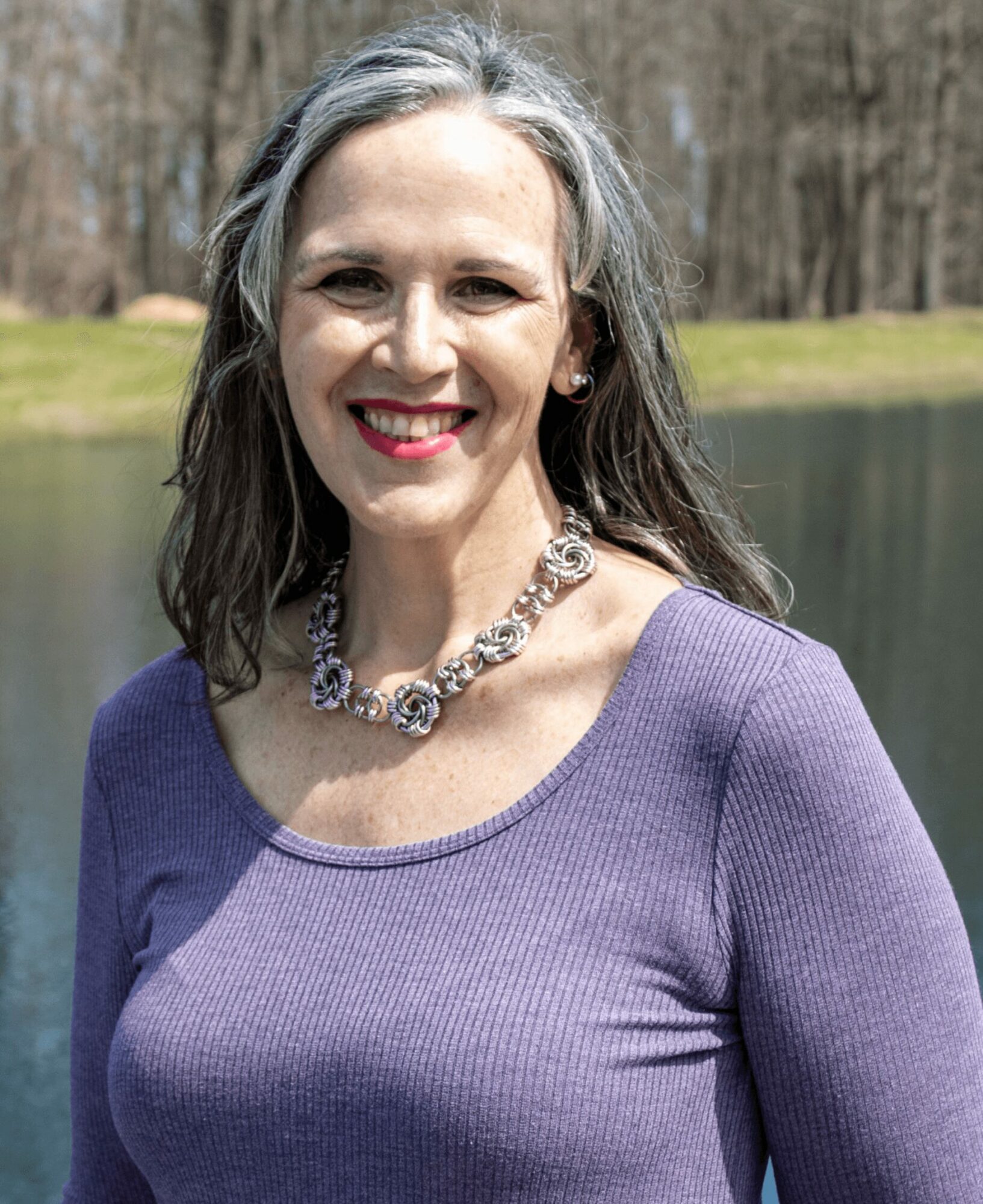
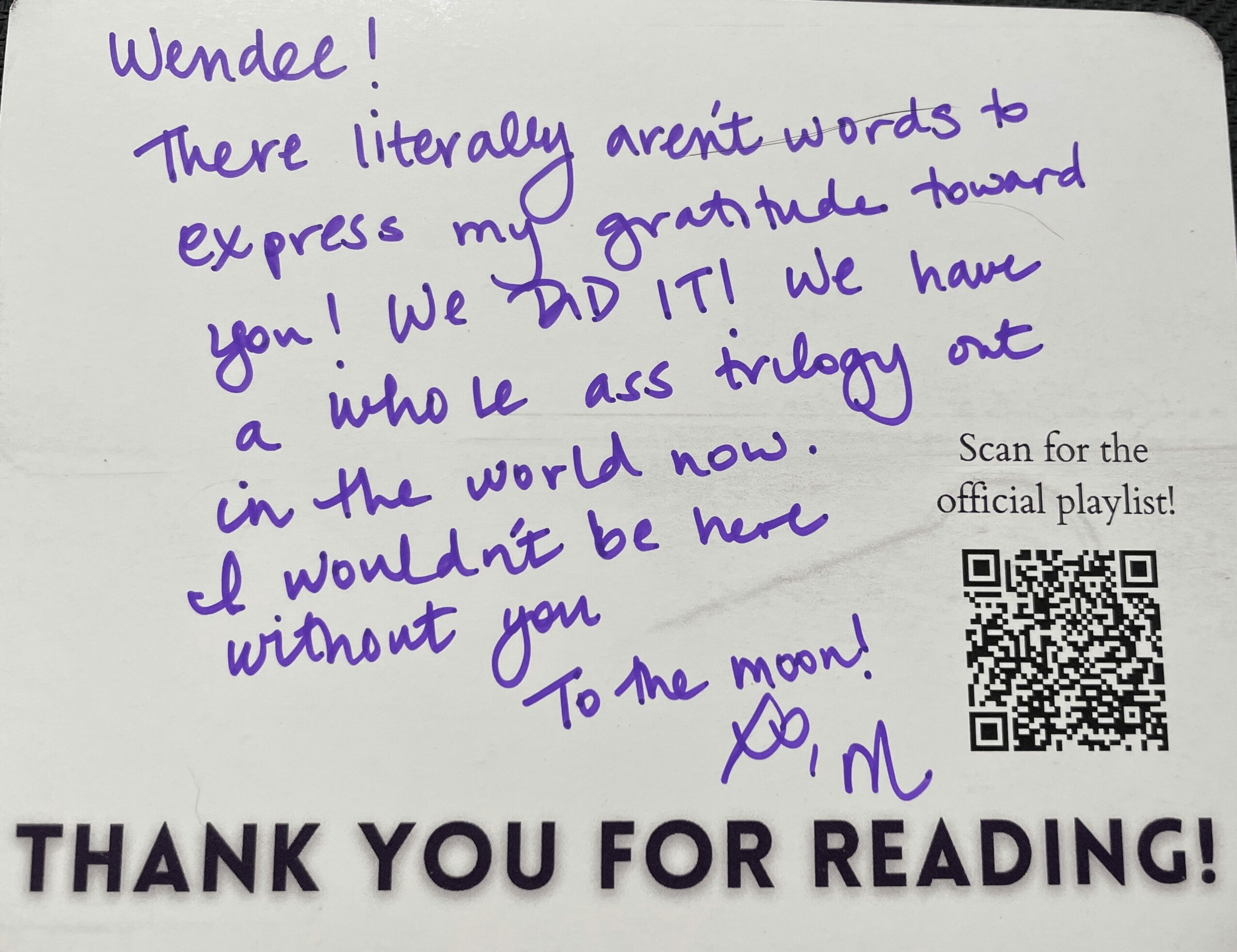
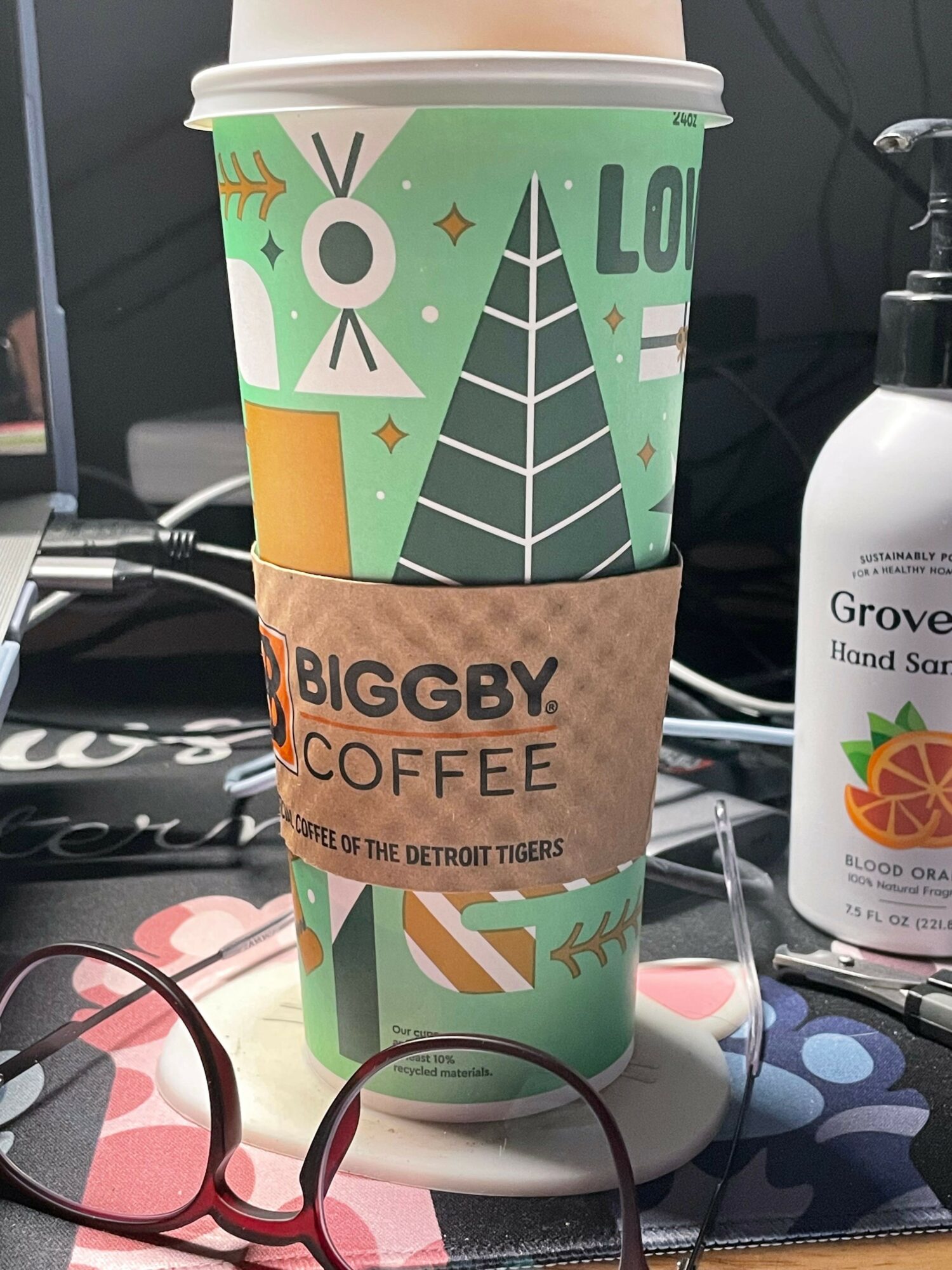
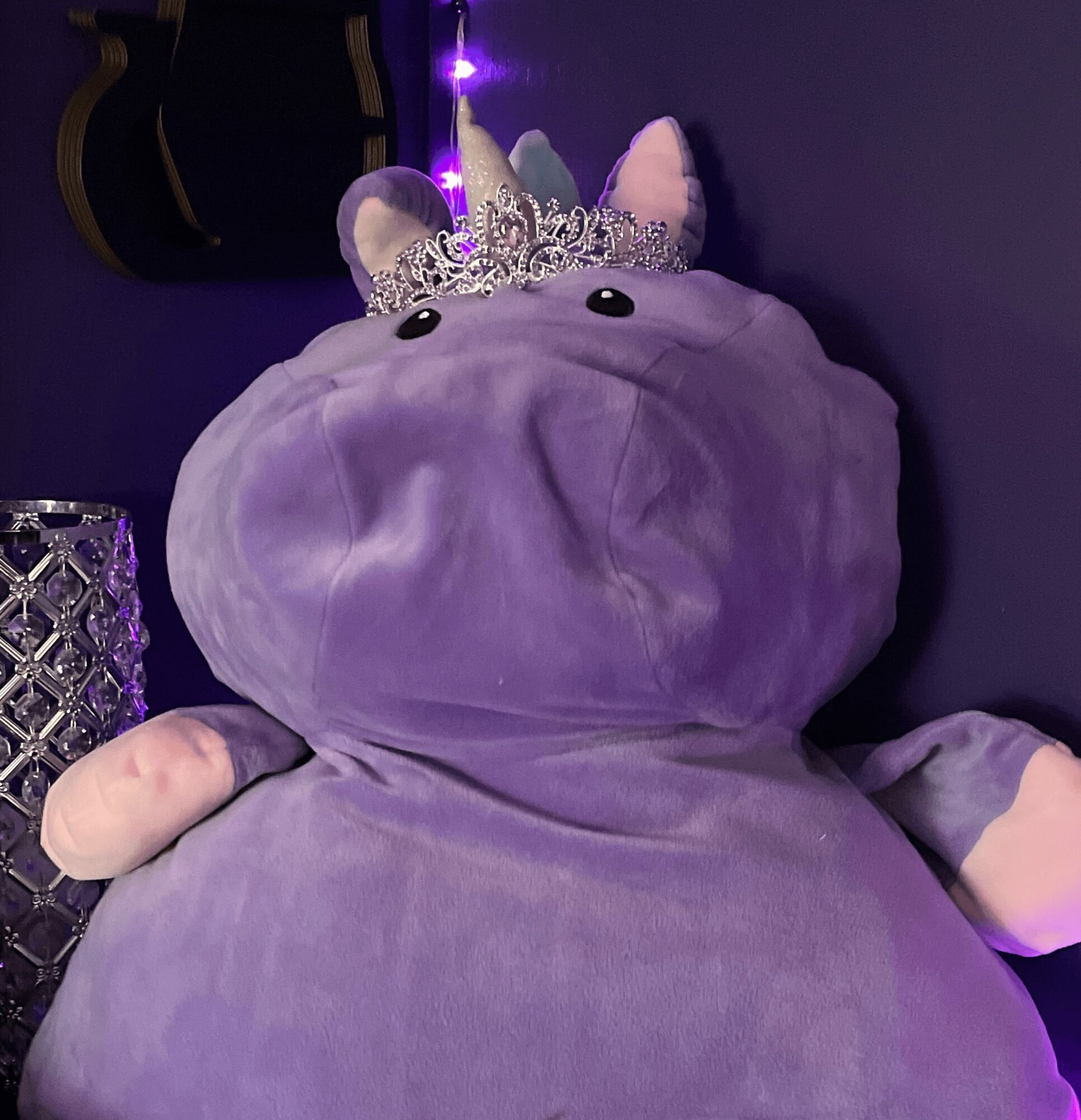
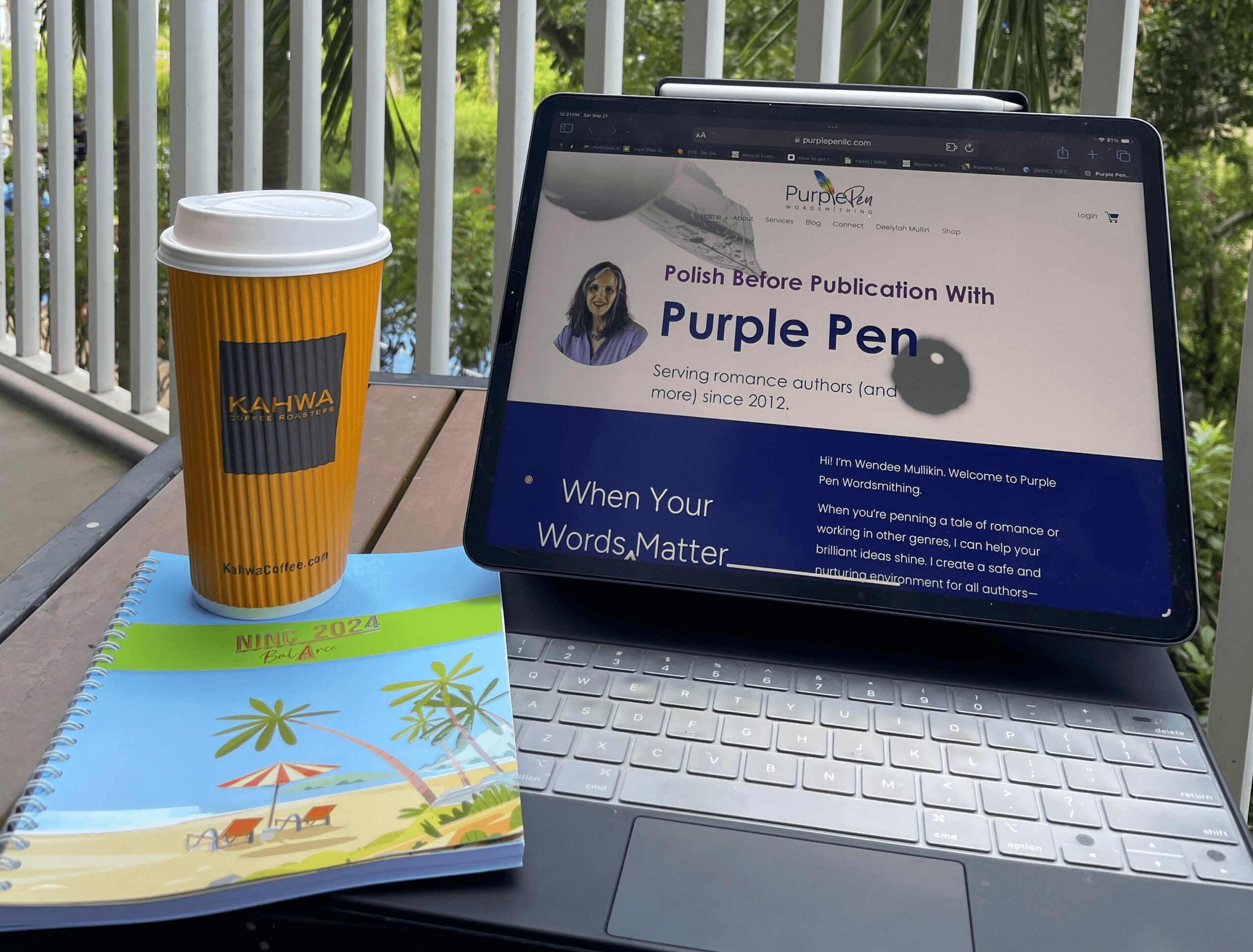
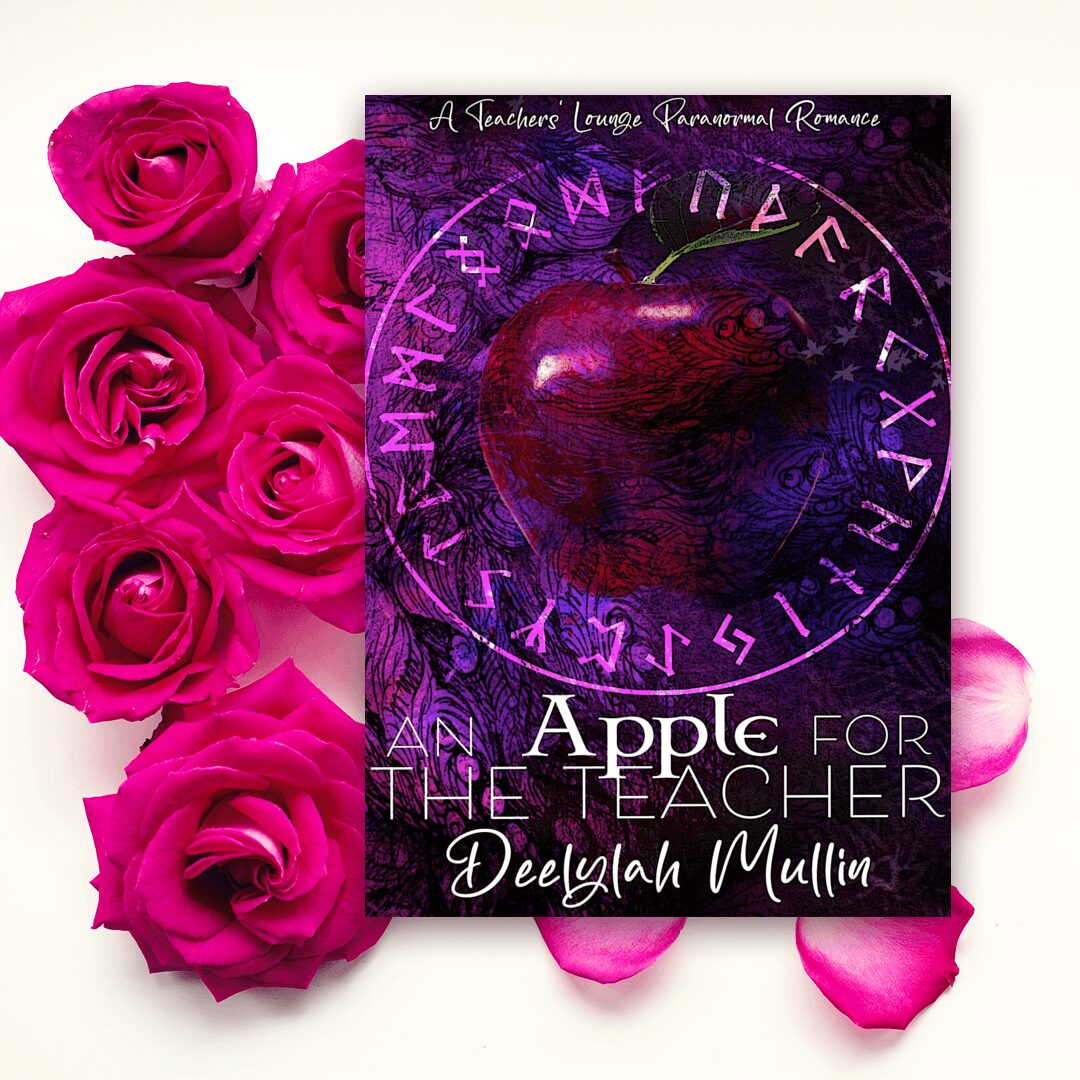
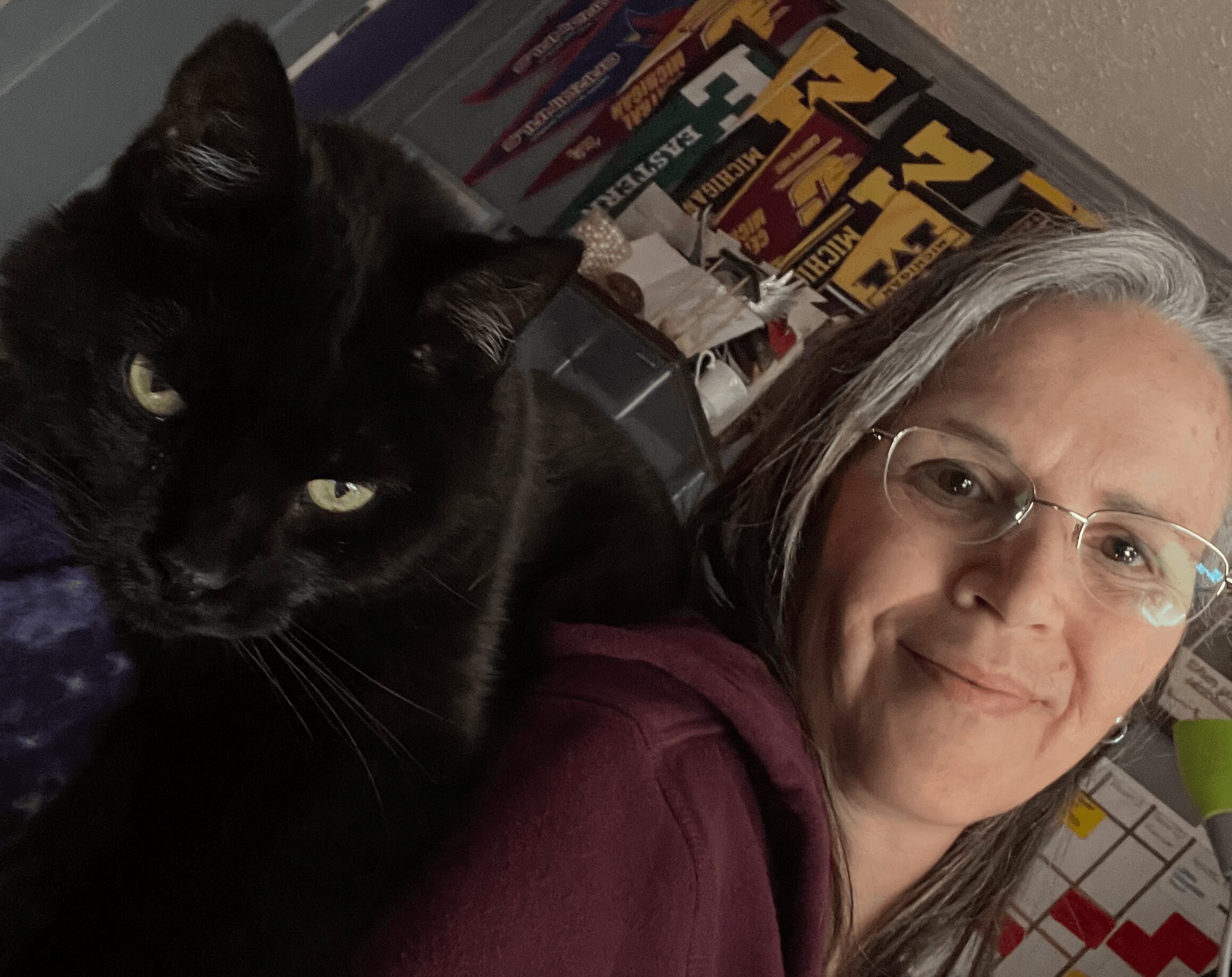
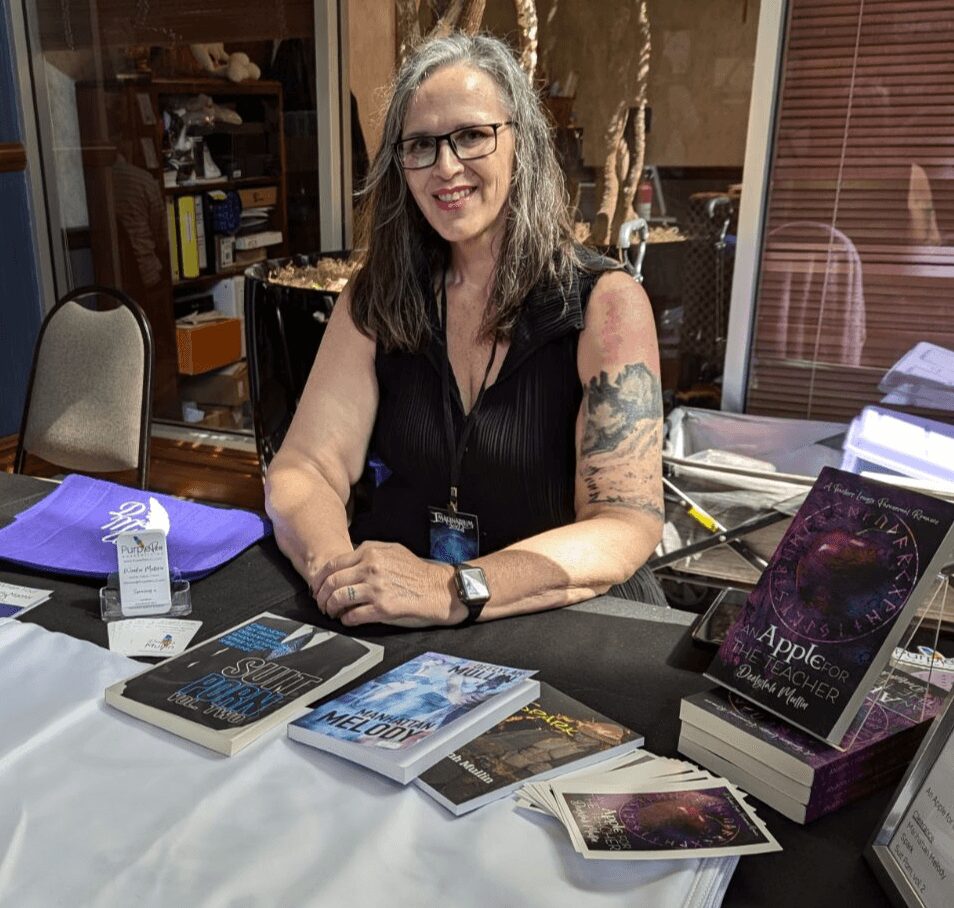
Image Credits
Brittany Deal, 2B Design



